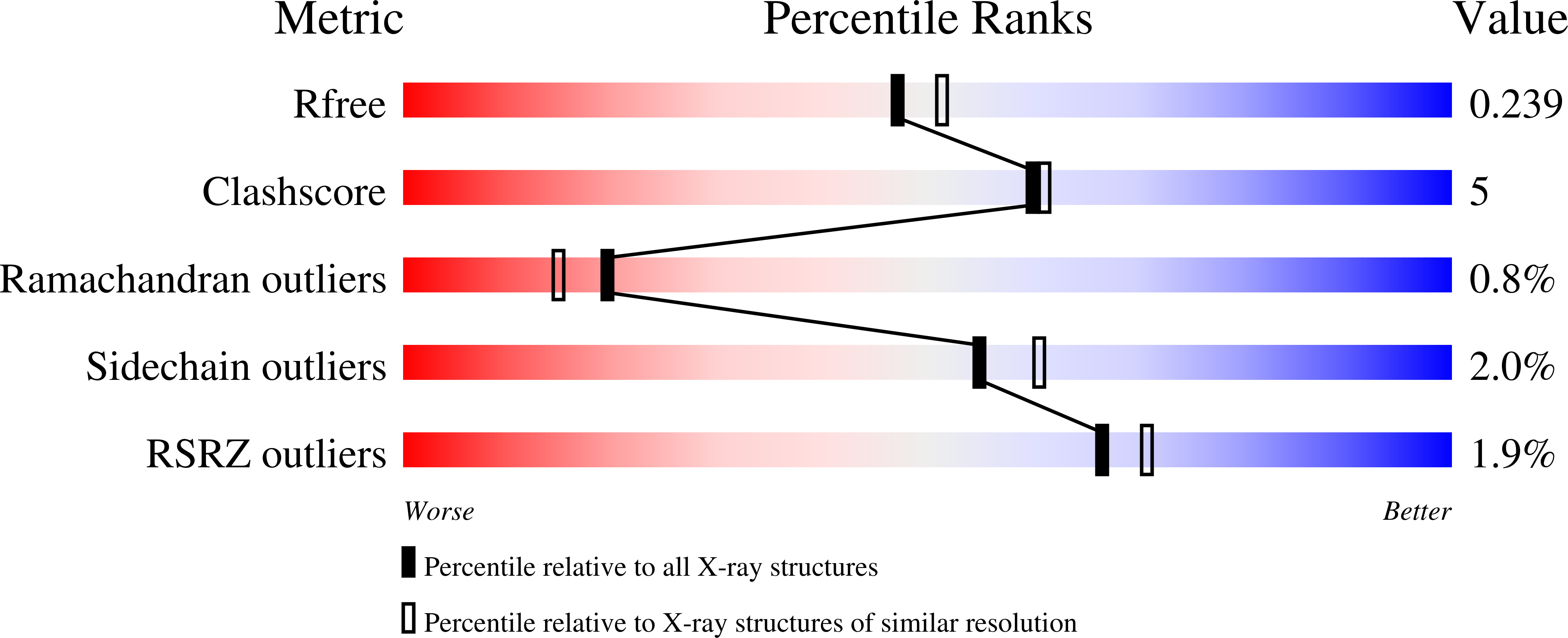Crystal Structure of Nicotinic Acid Mononucleotide Adenylyltransferase from Staphyloccocus aureus: Structural Basis for NaAD Interaction in Functional Dimer.
Han, S., Forman, M.D., Loulakis, P., Rosner, M.H., Xie, Z., Wang, H., Danley, D.E., Yuan, W., Schafer, J., Xu, Z.(2006) J Mol Biol 360: 814-825
- PubMed: 16784754
- DOI: https://doi.org/10.1016/j.jmb.2006.05.055
- Primary Citation of Related Structures:
2H29, 2H2A - PubMed Abstract:
Bacterial nicotinic acid mononucleotide adenylyltransferase (NaMNAT; EC 2.7.7.18) encoded by the nadD gene, is essential for cell survival and is thus an attractive target for developing new antibacterial agents. The NaMNAT catalyzes the transfer of an adenylyl group of ATP to nicotinic acid mononucleotide (NaMN) to form nicotinic acid dinucleotide (NaAD). Two independently derived, high-resolution structures of Staphylococcus aureus NaMNAT-NaAD complexes establish the conserved features of the core dinucleotide-binding fold with other adenylyltransferases from bacteria to human despite a limited sequence conservation. The crystal structures reveal that the nicotinate carboxylates of NaAD are recognized by interaction with the main-chain amides of Thr85 and Tyr117, a positive helix dipole and two bridged-water molecules. Unlike other bacterial adenylyltransferases, where a partially conserved histidine residue interacts with the nicotinate ring, the Leu44 side-chain interacts with the nicotinate ring by van der Waals contact. Importantly, the S. aureus NaMNAT represents a distinct adenylyltransferase subfamily identifiable in part by common features of dimerization and substrate recognition in the loop connecting beta5 to beta6 (residues 132-146) and the additional beta6 strand. The unique beta6 strand helps orient the residues in the loop connecting beta5 to beta6 for substrate/product recognition and allows the beta7 strand structural flexibility to make key dimer interface interactions. Taken together, these structural results provide a molecular basis for understanding the coupled activity and recognition specificity for S. aureus NaMNAT and for rational design of selective inhibitors.
Organizational Affiliation:
Pfizer Inc. Pfizer Global Research and Development, Eastern Point Road, Groton, CT 06340, USA. [email protected]


















